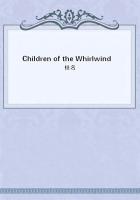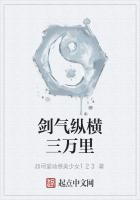In this entire section we have discussed only the turnovers of the circulating capital, not those of the fixed, for the ****** reason that the question at issue has nothing to do with fixed capital. The instruments of labour, etc., employed in the process of production form only fixed capital, inasmuch as their time of employment exceeds the period of turnover of the circulating capital; inasmuch as the period of time during which these instruments of labour continue to serve in perpetually repeated labour-processes is greater than the period of turnover of the circulating capital, and hence equal to the n periods of turnover of the circulating capital. Regardless of whether the total time represented by these n periods of turnover of the circulating capital is longer or shorter, that portion of the productive capital which was advanced for this time in fixed capital is not advanced anew during its course. It continues its functions in its old use-form.
The difference is merely this: In proportion to the varying length of a single working period of each period of turnover of the circulating capital, the fixed capital gives up a greater or smaller part of its original value to the product of that working period, and proportionally to the duration of the circulation time of each period of turnover this value-part of the fixed capital given up to the product returns quicker or slower in money-form. The nature of the subject we are discussing in this section -- the turnover of the circulating portion of productive capital -- derives from the very nature of this portion. The circulating capital employed in a working period cannot be applied in a new working period until it has completed its turnover, until it has been transformed into commodity-capital, from that into money-capital, and from that back into productive capital.
Hence, in order that the first working period may be immediately followed by a second, capital must be advanced anew and converted into the circulating elements of productive capital, and its quantity must be sufficient to fill the void occasioned by the circulation period of the circulating capital advanced or the first working period. This is the source of the influence exerted by the length of the working period of the circulating capital over the scale of the labour-process and the division of the advanced capital or the addition of new portions of capital. This was precisely what we had to examine in this section.
IV. CONCLUSION>From the preceding investigation it follows that A . The different portions into which capital must be divided in order that one part of it may be continually in the working period while others are in the period of circulation, relieve one another, like different independent individual capitals, in two cases: (1) when the working period is equal to the period of circulation, so that the period of turnover is divided into two equal sections; (2) when the period of circulation is longer than the working period, but at the same time is a ****** multiple of the working period, so that one period of circulation is equal to n working periods, in which case n must be a whole number. In these cases no portion of the successively advanced capital is set free.
B . On the other hand in all cases in which (1) the period of circulation is longer than the working period without being a ****** multiple of it, and (2) in which the working period is longer than the circulation period, a portion of the total circulating capital is set free continually and periodically at the close of each working period, beginning with the second turnover. This freed capital is equal to that portion of the total capital which has been advanced for the circulation period, provided the working period is longer than the period of circulation; and equal to that portion of the capital which has to fill up the excess of the circulation period over the working period or over a multiple of working periods, provided the circulation period is longer than the working period.
C . It follows that for the aggregate social capital, so far as its circulating part is concerned, the release of capital must be the rule, while the mere alternation of portions of capital functioning successively in the production process must be the exception. For the equality of the working and circulation periods, or the equality of the period of circulation and a ****** multiple of the working period, this regular proportionality of the two components of the period of turnover has absolutely nothing to do with the nature of the case and for this reason it can occur on the whole only as a matter of exception.
A very considerable portion of the social circulating capital, which is turned over several times a year, will therefore periodically exist in the form of released capital during the annual turnover cycle.
It is furthermore evident that, all other circumstances being equal, the magnitude of the released capital grows with the volume of the labour-process or with the scale of production, hence with t he development of capitalist production in general. In the case cited under B , (2), because the total advanced capital increases; in B (1), because with the development of capitalist production the length of the period of circulation grows, hence also the period of turnover in those cases where the working period is less than the period of circulation, and there is no regular ratio between the two periods.
In the first case for instance we had to invest £100 per week. This required £600 for a working period of 6 weeks, £300for a circulation period of 3 weeks, totalling £900. In that case £300 are released continually. On the other hand if £300 are invested weekly, we have £1,800 for the working period and £900for the circulation period. Hence £900 for the circulation period.
Hence £900 instead of £300 are periodically set free.














